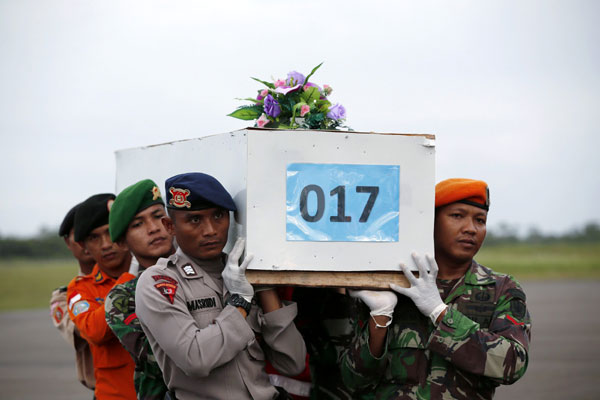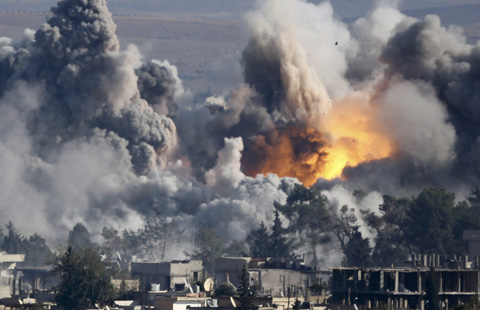Indonesia official: Some AirAsia victims belted in seats
(Agencies) Updated: 2015-01-02 20:22
PANGKALAN BUN, Indonesia - After nearly a week of searching for the victims of AirAsia Flight 8501, rescue teams battling monsoon rains had their most successful day yet on Friday, more than tripling the number of bodies pulled from the Java Sea, some still strapped to their seats.
Of the 30 corpses recovered so far, 21 were found on Friday, many of them by a U.S. Navy ship, according to officials.
The Airbus A320 carrying 162 passengers and crew went down Sunday, halfway into a flight from Surabaya, Indonesia's second-largest city, to Singapore. Minutes before losing contact, the pilot told air-traffic control he was approaching threatening clouds, but was denied permission to climb to a higher altitude because of heavy air traffic.
It remains unclear what caused the plane to plunge into the sea. The accident was AirAsia's first since it began operations in 2001, quickly becoming one of the region's most popular low-cost carriers.
In addition to looking for victims, Search and Rescue Agency chief Henry Bambang Soelistyo said ships from Indonesia, Malaysia, Singapore and the US are scouring the ocean floor as they try to pinpoint wreckage and the all-important black boxes.
The data recorder contains crucial information like engine temperature and vertical and horizontal speed; the voice recorder saves conversations between pilots and other sounds coming from inside the cockpit.
Toos Saniotoso, an Indonesian air safety investigator, said investigators "are looking at every aspect" as they try to determine why the plane crashed. "From the operational side, the human factor, the technical side, the ATC (air-traffic control) _ everything is valuable to us."
Generally, aviation experts say the more passengers, luggage and parts of the aircraft that remain intact indicate the plane hit the water in one piece. That would signal problems like a mechanical error or a stall instead of a mid-air break-up due to an explosion or sudden depressurization.
- More bodies from crashed AirAsia plane identified
- 7 more bodies recovered from AirAsia crash, 16 total
- 1st body identified from AirAsia crash handed to family
- One AirAsia victim was wearing a life jacket
- AirAsia victim with life jacket raises questions about plane's last moments
- Singapore's vessels to join new search mission for AirAsia plane wreckage
- Bad weather hampers search for AirAsia wreckage







